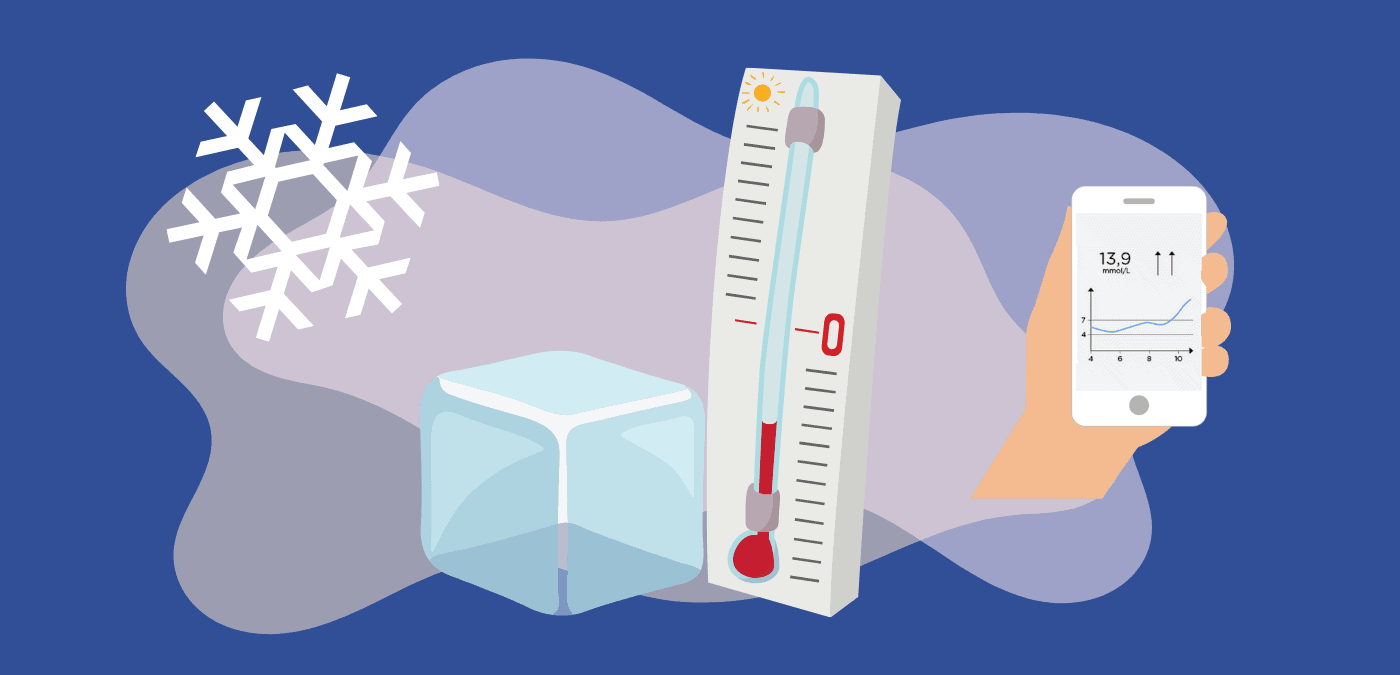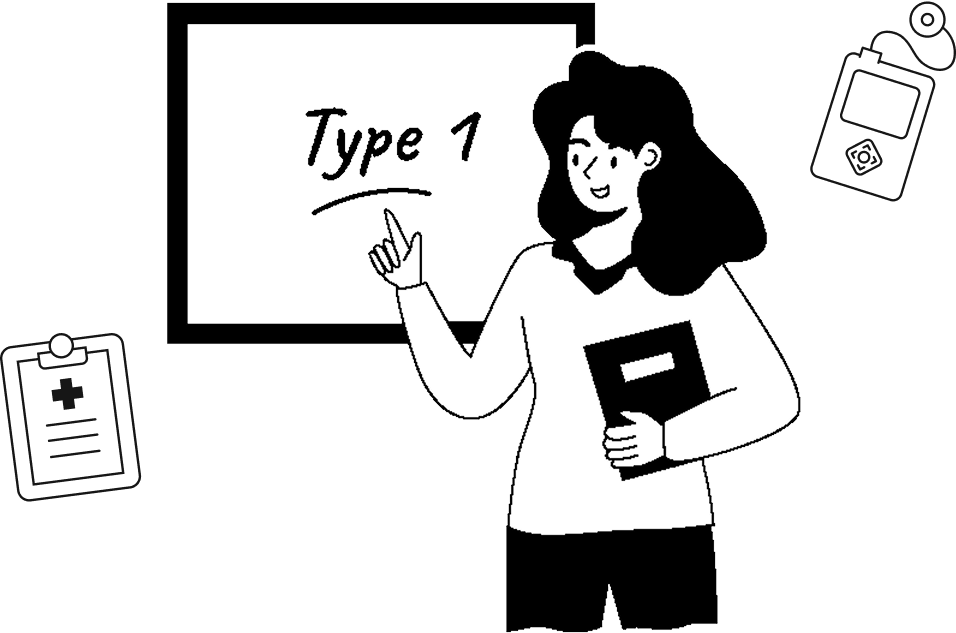The risk of developing an eating disorder (such as anorexia or bulimia) or disturbed eating behaviours (such as skipping meals or feeling a loss of control) is higher among people with type 1 diabetes (T1D) than among the rest of the population. This could be partly due to the close attention they must constantly pay to what they eat.
As a result, teenage girls and young women with T1D have twice the risk of developing eating disorders than other girls and women without this condition. According to the latest studies, 10% of teenage girls with T1D have been diagnosed with an eating disorder, compared to 4% of the general teenage population.
A mental health problem that needs to be detected early
According to Anorexie et boulimie Québec (ANEB), a community-based support organization, eating disorders are complex disorders that are mainly characterized by abnormal eating patterns, a strong fear of weight gain, and an intense preoccupation with body image.
Eating disorders can start to manifest as early as childhood, often insidiously. This can start, for example, by a refusal to eat snacks, a decrease in appetite or a change in food preferences and eating habits (e.g., suddenly not wanting to eat dessert). Sometimes, the early signs of these disorders are disguised with claims of ethical or medical dietary choices (e.g., veganism, ketogenic diets).
It can be difficult to detect this type of disorder because some people may not realize they have it themselves, or will try to deny it or hide it from others.
In the context of T1D, the following signs (in addition to food-related signs) can point to an eating disorder: prolonged or unexplained high glycated hemoglobin, recurrent hypoglycemia episodes after physical exercise, persistent morning-time hyperglycemia or repeated episodes of diabetes ketoacidosis, even less severe ones, or significant unexplained glycemic variability.
“Forgetting” to take insulin to lose weight
There’s an eating disorder specific to people with T1D that manifests mainly as voluntarily omitting to take insulin in order to lose weight. Some, when newly diagnosed, will associate their insulin use and weight gain, in particular because their insulin treatment has made them regain the weight they had lost as a result of the hyperglycemia caused by their undiagnosed T1D. In some cases, this self-restriction of insulin is combined with bouts of bulimia, which is then called diabulimia.
According to different studies, between 10% and 20% of mid-teen girls, and between 30% and 40% of late-teen girls and young women, sometimes skip or deliberately decrease their insulin doses to control their weight. Without insulin, sugar found in the blood cannot penetrate cells, so the body needs to burn fat as a source of energy, in addition to eliminating the sugar through urine, which ultimately leads to weight loss. This strategy is not recommended because it can lead to serious consequences, such as frequent hyperglycemia, chronic fatigue, repeated urinary infections, and increased risk of severe complications (e.g., hospitalization for diabetic ketoacidosis, a dangerous concentration of ketones in the blood) and earlier onset of chronic complications (e.g., eye or kidney damage).
According to data from 1,041 adult participants in the BETTER registry, 7.2% of respondents stated that they intentionally omitted to take their insulin in order to lose weight, out of which the vast majority o (93.2%) identified as female. They were also younger at the time of their T1D diagnosis than other respondents who never intentionally omitted insulin doses for weight control. Being female, having diabetes-related distress and experiencing significant weight fluctuations are all risk factors of developing this behaviour.
When eating well becomes an obsession
Another eating disorder, called orthorexia, affects many people with T1D, including approximately 13.4% of adults and up to 81.3% of children and teenagers, while it affects only 1% to 7% of the general population. Orthorexia is defined as an obsession for healthy foods (or healthy eating), and is characterized by an anguish, or even a fear, of eating unhealthy foods. Diet becomes dictated by rigid and inflexible rules that are often established based on deformed or false perceptions (e.g., you shouldn’t eat cookies because they’re not healthy).
Not only does this disorder make it more difficult to manage diabetes, but it also causes emotional distress, anxiety, concentration problems, and a feeling of guilt associated with never being satisfied with the quality of one’s diet.
Finding support to overcome eating disorders
If you think you have a difficult relationship with food, don’t hesitate to talk about it with your loved ones and healthcare team. There’s no need to wait for this difficult relationship to make you suffer before you talk about it, even if it doesn’t exactly match the descriptions given above for various disorders. Studies that followed people with eating disorders over extended periods show that many people get better and regain a healthy relationship with food. Treatments are mostly based on psychological interventions, such as cognitive-behavioural therapy (CBT), to change false beliefs about weight and food, and instill new eating habits.
There are also various resources available to you for information and support. These include:
- ANEB Québec
- Douglas Institute Eating Disorders Program [Montreal-based]
- National Eating Disorder Information Centre
- BACA Eating Disorders Clinic [Montreal-based]
- Centre for Addiction and Mental Health (CAMH) [Ontario]
- Kelty Eating Disorders [British Columbia]
- Alberta Wellness Center for Eating Disorders
To find out more: Watch or re-watch Sylvain Iceta’s webinar called Healthy Relationship with Food and Type 1 Diabetes: Is it Possible?.
References :
JDRF. Mental Health and T1D. Page viewed on October 24th, 2023. https://www.jdrf.ca/life-with-t1d/mental-health/
South, C. et al. (2023). Factors associated with intentional insulin omission to lose weight in people with type 1 diabetes: a BETTER registry analysis. Abstracts in Can. J. Diabetes 47, S83-S126. Article to be published.
Iceta, S. (2022). Étude des caractéristiques de l’orthorexie mentale dans la population vivant avec le diabète de type 1 (Santal-DT1). Good Clinical Practice Network. Page viewed on November 7th, 2023. [in French] https://ichgcp.net/fr/clinical-trials-registry/NCT05546281
Darmon, P. et al. (2021). Eating disorders and type 1 diabetes: a complex relationship. Médecine des maladies métaboliques 14(4), 369-364. https://doi.org/10.1016/j.mmm.2021.04.012
Darmon, P. (2018). Conduites alimentaires : la diaboulimie de l’adolescente. Le Quotidien du médecin 9688. [in French] https://www.sfdiabete.org/mediatheque/kiosque/articles-qdm/conduites-alimentaires-la-diaboulimie-de-ladolescente
Diabetes Canada (2014). Diabetes and mental health. Document viewed on October 24th, 2023. https://www.diabetes.ca/DiabetesCanadaWebsite/media/Health-care-providers/2018%20Clinical%20Practice%20Guidelines/Ch18-Diabetes-and-Mental-Health.pdf?ext=.pdf
Leroux, C. and Bouchard, C. (Winter 2020-2021). Comportements alimentaires problématiques et diabète de type 1. Plein soleil. [in French only] https://type1better.com/wp-content/uploads/2020/12/2020_PS4_IRCM.pdf

Written by: Nathalie Kinnard, scientific writer and research assistant
Reviewed by:
- Sarah Haag, R.N., B.Sc.
- Rémi Rabasa-Lhoret, M.D., Ph.D.
- Anne-Sophie Brazeau, P.Dt., Ph.D.
- Sylvain Iceta, M.D., Ph.D., researcher, Université Laval
- Courtney South, M.Sc., nutrition Ph.D. student, Université McGill
- Aude Bandini, Michel Dostie, Claude Laforest, patient partners of the BETTER project




